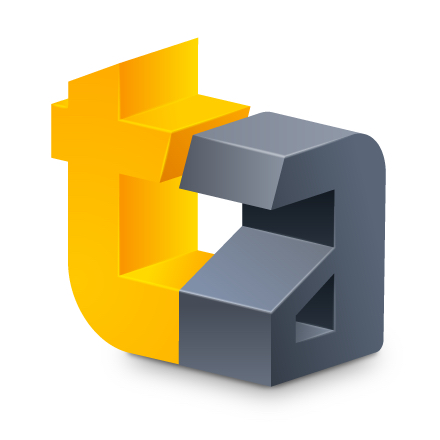 Hello, gentle readers, and welcome to the RPG Reload. This week, we’re continuing our little monthly project looking at the history of handheld RPGs. That means that we will not be taking a look at a specific RPG from the App Store’s past this time around. Last month, we looked at the later years of the Game Boy, from Pokemon‘s launch to the Game Boy Color. This time around, we’re taking a step back to look at the largely unsuccessful challengers to the Game Boy’s long reign. In total, this feature will span twelve columns, each one taking a look at a specific era in handheld RPGs. I hope you enjoy reading them as much as I’ve enjoyed researching and writing them! Please let me know what you think by commenting below, posting in the Official RPG Reload Club thread, or by tweeting me at @RPGReload.
Hello, gentle readers, and welcome to the RPG Reload. This week, we’re continuing our little monthly project looking at the history of handheld RPGs. That means that we will not be taking a look at a specific RPG from the App Store’s past this time around. Last month, we looked at the later years of the Game Boy, from Pokemon‘s launch to the Game Boy Color. This time around, we’re taking a step back to look at the largely unsuccessful challengers to the Game Boy’s long reign. In total, this feature will span twelve columns, each one taking a look at a specific era in handheld RPGs. I hope you enjoy reading them as much as I’ve enjoyed researching and writing them! Please let me know what you think by commenting below, posting in the Official RPG Reload Club thread, or by tweeting me at @RPGReload.
It should go without saying that tabletop, computer, console, handheld, and mobile games are all inextricably tied with each other in various ways. To consider how other platforms contributed to handheld RPGs in these articles would grow them well beyond the scope I’m able to deal with. I’ll be mentioning some influences here and there, but this is basically a disclaimer that I’m aware handheld RPGs don’t exist in a vacuum, in spite of the relatively narrow historical focus of these articles.
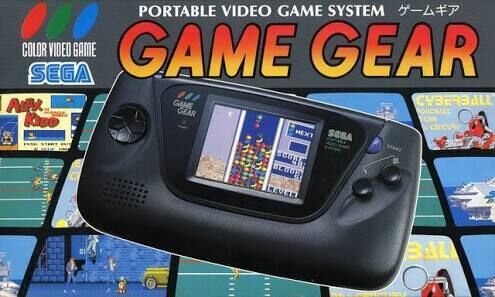
The History Of Handheld RPGs, Part Four – Game Boy’s Competition
In the admittedly brief history of video games, no other hardware has dominated its marketspace with the strength and longevity that the Game Boy did. It wasn’t for a lack of challengers, either. With handhelds proving to be a lucrative new market, it wasn’t surprising that many other companies of varying sizes wanted to take their shot. As such, Game Boy faced competition from its first year to its last. Yet, if you add all of those pieces of competing hardware together, they barely sold more than 10% of what the Game Boy did. SEGA’s Game Gear was the most successful of the lot, managing just over 10 million units sold in its lifespan. At its peak, SEGA’s first portable machine wrestled about 20% of the handheld market away from the Game Boy, and that’s literally the best anyone would ever do against it.
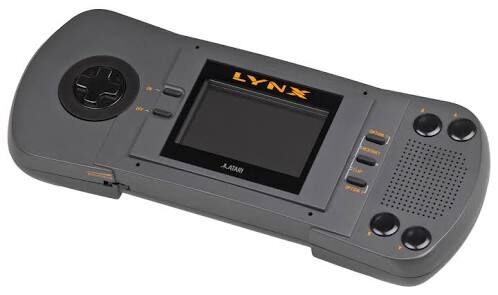 With hindsight, it’s easy to point out reasons why that happened with each piece of hardware. The Atari Lynx, released in October of 1989, a few months after the Game Boy, was absurdly, needlessly large, and its powerful hardware came with a heavy cost to battery life when compared to Nintendo’s handheld. While there were some quality titles in its library, the Lynx had very few properties it could leverage against Nintendo’s powerful brands, and thanks to its parent company’s limited reach at the time, it had virtually no chance of success outside of its home country of the United States. We won’t be talking much more about the Lynx here, however, as there isn’t even a single RPG in its software library.
With hindsight, it’s easy to point out reasons why that happened with each piece of hardware. The Atari Lynx, released in October of 1989, a few months after the Game Boy, was absurdly, needlessly large, and its powerful hardware came with a heavy cost to battery life when compared to Nintendo’s handheld. While there were some quality titles in its library, the Lynx had very few properties it could leverage against Nintendo’s powerful brands, and thanks to its parent company’s limited reach at the time, it had virtually no chance of success outside of its home country of the United States. We won’t be talking much more about the Lynx here, however, as there isn’t even a single RPG in its software library.
If anyone had a chance, it was SEGA with their Game Gear. Arriving in Japan in October of 1990 and in America in the following April, it debuted just as SEGA’s brand was catching fire internationally. Like the Lynx, it had a full-color, backlit screen that made the Game Boy look ancient by comparison. Unlike the Lynx, the Game Gear was backed by a broad range of games with marketable brands behind them, like Sonic The Hedgehog, Mickey Mouse, and Shinobi. On the other hand, its battery life was by far the worst of any handheld that had been released, barely scratching out a couple of hours from six AA batteries. SEGA had a worldwide presence and was exceptionally good at marketing their products in that period, and the Game Gear benefited from that as much as it could have. It never felt like the Game Gear was a focus for SEGA, unfortunately, though its support was quite healthy. As was the case with the Lynx, the Game Gear’s sales had petered out by the mid-90s, with SEGA officially pulling the plug on it in 1997.
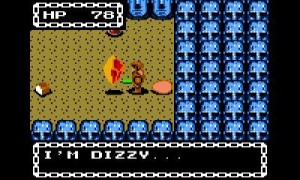 Considering the time period, the Game Gear had a surprisingly diverse line-up of games. A total of 18 RPGs were released for the handheld between 1990 and 1996, but only a handful would release outside of Japan. Its first RPG was among those, however. Dragon Crystal, developed and published by SEGA, came out within a couple of months of the Game Gear’s Japanese launch, and was among the early batch of releases when the machine launched in North America and Europe the following year. It shares a lot of its assets and gameplay with Fatal Labyrinth, a Genesis title that released around the same time, and is one of the earliest examples of a Japanese-style roguelike. It’s without a doubt the first handheld roguelike, and it deserves some distinction for that alone. Apart from that interesting note, it’s quite an ordinary game for its genre. You need to search each floor to find the exit to the next, gathering items and fighting enemies along the way. The layouts are randomly generated each time you play, giving the game a lot of replay value relative to its contemporary peers.
Considering the time period, the Game Gear had a surprisingly diverse line-up of games. A total of 18 RPGs were released for the handheld between 1990 and 1996, but only a handful would release outside of Japan. Its first RPG was among those, however. Dragon Crystal, developed and published by SEGA, came out within a couple of months of the Game Gear’s Japanese launch, and was among the early batch of releases when the machine launched in North America and Europe the following year. It shares a lot of its assets and gameplay with Fatal Labyrinth, a Genesis title that released around the same time, and is one of the earliest examples of a Japanese-style roguelike. It’s without a doubt the first handheld roguelike, and it deserves some distinction for that alone. Apart from that interesting note, it’s quite an ordinary game for its genre. You need to search each floor to find the exit to the next, gathering items and fighting enemies along the way. The layouts are randomly generated each time you play, giving the game a lot of replay value relative to its contemporary peers.
The following year saw two more RPG releases, but like Dragon Crystal, neither was a conventional JRPG. Ax Battler: A Legend Of Golden Axe was a spin-off of SEGA’s popular arcade beat-em-up series. Releasing in November of 1991, it took a lot of cues from Nintendo’s Zelda 2: Adventure Of Link, merging action-RPG combat with adventure elements like towns and an overworld map. It wasn’t half-bad and its license drew some attention, but Ax Battler wasn’t nearly as good as its inspiration, a game which was contentious enough on its own. It’s worth mentioning that this was the first game developed by Japanese company Aspect, who would go on to create just about all of the Sonic The Hedgehog Game Gear titles. December 1991 saw the release of Crystal Warriors, which would make its way overseas in April of 1992. Another SEGA-developed title, Crystal Warriors was a strategy RPG that was likely inspired by Nintendo’s popular Fire Emblem. For its time, it was decent, but from looking at sales, it appears that handheld strategy fans were more enthralled with the first Super Robot Wars over on Nintendo’s competing hardware.
 For English fans of RPGs, things were going fairly well early on. All three of Game Gear’s RPGs from its first year were released overseas with competent translations. Unfortunately, the gravy train was about to stop for non-Japanese fans, leaving a handful of major releases without localizations. Two of those major releases were among 1992’s RPG line-up for the Game Gear. By this point, the Game Boy had several traditional JRPGs in its library, while Game Gear only had a few hybrids. SEGA decided to fill that hole with the best card they had in their hand: Phantasy Star. The IP had already been used for a Game Gear adventure game, but SEGA commissioned developer Japan System Supply to create a traditional RPG in the style of the main series. Phantasy Star Gaiden released in Japan in November of 1992. It follows the story of two young villagers who are on a quest to find a kidnapped family member. It almost feels like fan-fiction at times, but it scratches the itch well enough. Phantasy Star Gaiden has the dubious honor of being the only traditional RPG in the series to not be officially released in English. It’s hard to guess why, given the main series was still getting localized at this time.
For English fans of RPGs, things were going fairly well early on. All three of Game Gear’s RPGs from its first year were released overseas with competent translations. Unfortunately, the gravy train was about to stop for non-Japanese fans, leaving a handful of major releases without localizations. Two of those major releases were among 1992’s RPG line-up for the Game Gear. By this point, the Game Boy had several traditional JRPGs in its library, while Game Gear only had a few hybrids. SEGA decided to fill that hole with the best card they had in their hand: Phantasy Star. The IP had already been used for a Game Gear adventure game, but SEGA commissioned developer Japan System Supply to create a traditional RPG in the style of the main series. Phantasy Star Gaiden released in Japan in November of 1992. It follows the story of two young villagers who are on a quest to find a kidnapped family member. It almost feels like fan-fiction at times, but it scratches the itch well enough. Phantasy Star Gaiden has the dubious honor of being the only traditional RPG in the series to not be officially released in English. It’s hard to guess why, given the main series was still getting localized at this time.
With that said, English Game Gear owners got what is in my opinion the better of the two traditional JRPGs released in 1992. Defenders Of Oasis, or Shadam Crusader as it’s known in Japan, is an Arabian Nights-flavored Dragon Quest clone. It has princes, genies, evil wizards, thieves, and all sorts of things that were about to be in vogue again courtesy of the November 1992 release of Disney’s Aladdin. I suspect the existence of that movie might explain why SEGA chose to localize this game while leaving two higher profile franchise releases in Japan. Whatever the reasoning, it’s a pretty cool mix of traditional gameplay and an unusual setting, and I’m glad it had a chance to venture beyond the borders of Japan.
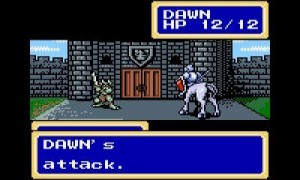 SEGA rounded out the year with the December release of Shining Force Gaiden. While the original Genesis Shining Force game had only released several months before, both SEGA and Sonic! Software Planning were clearly committed to the concept, as this spin-off was developed by the very same team as the main series installments. As such, it’s just about as good of a game as its big brother, spinning an interesting yarn while dishing out a bunch of enjoyable turn-based tactical battles. It doesn’t have the town exploration found in the Genesis installments, but apart from that, it’s not missing much. It’s a far better strategy RPG effort than Crystal Warriors, and I firmly believe that had it been the only Game Gear Shining Force released, we surely would have seen it localized after the Genesis title proved popular overseas in early 1993.
SEGA rounded out the year with the December release of Shining Force Gaiden. While the original Genesis Shining Force game had only released several months before, both SEGA and Sonic! Software Planning were clearly committed to the concept, as this spin-off was developed by the very same team as the main series installments. As such, it’s just about as good of a game as its big brother, spinning an interesting yarn while dishing out a bunch of enjoyable turn-based tactical battles. It doesn’t have the town exploration found in the Genesis installments, but apart from that, it’s not missing much. It’s a far better strategy RPG effort than Crystal Warriors, and I firmly believe that had it been the only Game Gear Shining Force released, we surely would have seen it localized after the Genesis title proved popular overseas in early 1993.
Unfortunately for English fans, Sonic! Software Planning worked very quickly in those days. Just after the original Genesis game launched in America, Shining Force Gaiden 2 released in Japan. SEGA opted to localize this game for release overseas in the following year as Shining Force: The Sword Of Hajya. The game is a direct sequel to the unlocalized Shining Force Gaiden, but it stands on its own decently enough. As you would guess given the quick turnaround, not much has changed in Sword Of Hayja from a mechanical or technological standpoint. It’s just another story with a new set of characters and stages. The development team would crank out one more game in this series titled Final Conflict before bowing out on Game Gear. The first two Gaiden games would later be collected as Shining Force CD, which did get an English release in March of 1995.
 Diligent counters will notice that we’ve reached five localized Game Gear RPGs, which means every other Game Gear RPG I mention from here on out was only made available in Japan. Besides Sword Of Hajya, 1993 would see the start of a series of RPGs that spun out of the puzzle series Puyo Puyo. The Madou Monogatari series of dungeon crawlers ran for four installments, with the last arriving in late 1995. They definitely erred on the cute side of things, and are perhaps an early signal of where JRPGs and Japanese dungeon crawlers in particular would go in the future. On the other side of the street from Madou Monogatari, Atlus developed a pair of Megami Tensei Last Bible spin-offs for the Game Gear. Last Bible Special is notable in that it included 3D dungeons, a Megami Tensei staple not seen in prior games in the sub-series. Finally, there was an action RPG named Sylvan Tale, a follow-up to Crystal Warriors called Royal Stone, a game based on the Magic Knight Rayearth manga, and to close things out with a bang, an actual decent Lunar spin-off called Lunar Walking School. Yes, Game Gear had a Phantasy Star, two Shining Forces, two Megami Tenseis, and a Lunar game all left unlocalized. It’s like they were practicing for SEGA Saturn or something.
Diligent counters will notice that we’ve reached five localized Game Gear RPGs, which means every other Game Gear RPG I mention from here on out was only made available in Japan. Besides Sword Of Hajya, 1993 would see the start of a series of RPGs that spun out of the puzzle series Puyo Puyo. The Madou Monogatari series of dungeon crawlers ran for four installments, with the last arriving in late 1995. They definitely erred on the cute side of things, and are perhaps an early signal of where JRPGs and Japanese dungeon crawlers in particular would go in the future. On the other side of the street from Madou Monogatari, Atlus developed a pair of Megami Tensei Last Bible spin-offs for the Game Gear. Last Bible Special is notable in that it included 3D dungeons, a Megami Tensei staple not seen in prior games in the sub-series. Finally, there was an action RPG named Sylvan Tale, a follow-up to Crystal Warriors called Royal Stone, a game based on the Magic Knight Rayearth manga, and to close things out with a bang, an actual decent Lunar spin-off called Lunar Walking School. Yes, Game Gear had a Phantasy Star, two Shining Forces, two Megami Tenseis, and a Lunar game all left unlocalized. It’s like they were practicing for SEGA Saturn or something.
If I had to sum up the Game Gear’s contributions to the development of handheld RPGs, it would be in proving that RPG hybrids like roguelikes and strategy RPGs could work just as well on handhelds as more typical JRPG fare. SEGA planted their flag hard into the handheld SRPG ground, in a way heralding the genre’s eventual hard shift to portable platforms. It would have been interesting to see how SEGA would have responded to Pokemon‘s success, but they never did follow-up on the Game Gear formally. Like NEC had before them, they released a handheld version of their 16-bit console that was compatible with its games, but also like NEC, they never released any software specifically for that device, so we won’t be talking about the SEGA Nomad here.
As I hopefully emphasized last month, Pokemon changed a lot of things for RPGs and the handheld market. With Virtual Boy’s failure, many were expecting Nintendo’s true Game Boy successor, and other companies were already starting to formulate their entries into the market. Pokemon significantly delayed Nintendo’s plans for releasing completely new hardware, giving a tiny window for a smart-minded company with more contemporary tech to crawl in through. A very, very tiny window that several companies tried to jump through almost at once. Only two of them made any real impact, and it was less of a sales impact than it was one of mind share, but they’re worth discussing if only to see what happens when you bring a gun to a knife fight and still somehow walk away missing both arms.
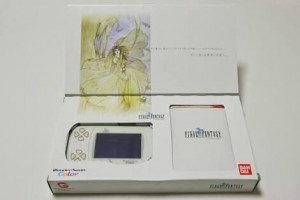 Both SNK’s Neo Geo Pocket and Bandai’s WonderSwan arrived in 1999. Neither would prove to be much of a success, though the Japan-exclusive WonderSwan did hang around in some form or another until 2003. The Neo Geo Pocket actually managed a worldwide release, but in spite of that only lasted half as long, bowing out in 2001 due to the financial difficulties of its parent company. Lessons had been learned from the failures of previous companies, so both systems were designed very much in the Nintendo vein. That meant low costs, low power consumption, and in their initial releases, monochromatic displays. For RPG fans, the WonderSwan was most famous for hosting ports of many of Squaresoft’s famous games. Nintendo and Squaresoft had supposedly had a terrible falling out over the Final Fantasy series moving to PlayStation. The story goes that Squaresoft had wanted to mend fences and release games on Nintendo’s handheld hardware, but apparently, Hiroshi Yamauchi, then Nintendo’s president, turned them away harshly. I’m not certain how much of that is true, but however Squaresoft came to support the WonderSwan, it was assuredly a lucky stroke for Bandai.
Both SNK’s Neo Geo Pocket and Bandai’s WonderSwan arrived in 1999. Neither would prove to be much of a success, though the Japan-exclusive WonderSwan did hang around in some form or another until 2003. The Neo Geo Pocket actually managed a worldwide release, but in spite of that only lasted half as long, bowing out in 2001 due to the financial difficulties of its parent company. Lessons had been learned from the failures of previous companies, so both systems were designed very much in the Nintendo vein. That meant low costs, low power consumption, and in their initial releases, monochromatic displays. For RPG fans, the WonderSwan was most famous for hosting ports of many of Squaresoft’s famous games. Nintendo and Squaresoft had supposedly had a terrible falling out over the Final Fantasy series moving to PlayStation. The story goes that Squaresoft had wanted to mend fences and release games on Nintendo’s handheld hardware, but apparently, Hiroshi Yamauchi, then Nintendo’s president, turned them away harshly. I’m not certain how much of that is true, but however Squaresoft came to support the WonderSwan, it was assuredly a lucky stroke for Bandai.
During the lifespan of the WonderSwan, Squaresoft would release remakes of Final Fantasy 1, Final Fantasy 2, Final Fantasy 4, Makaitoshi SaGa (Final Fantasy Legend), Front Mission, and Romancing SaGa. They also released an installment in their Chocobo’s Mystery Dungeon series. Squaresoft’s support drew other brands to the handheld, including Wizardry, Atelier, Riviera, and Arc The Lad. Bandai themselves supplemented this strong line-up with a Dragon Ball card-battling RPG and an assortment of Digimon games. Besides Squaresoft’s games, these Digimon titles were some of the best ammunition Bandai had. While there was no question concerning Pokemon‘s dominance, Digimon was very popular in its own right, and since Bandai was its owner, it could leverage the brand to the WonderSwan’s advantage. Unfortunately for Bandai, the WonderSwan had trouble putting up much of a fight against the Game Boy Color, let alone the Game Boy Advance. Things might have turned out better if Bandai had distributed the machine worldwide instead of just in Japan, but it’s hard to say how its license-heavy library would have fared with the overseas audience.
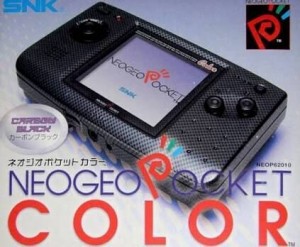 The Neo Geo Pocket, best known in its second revision as the Neo Geo Pocket Color, had a different life ahead of it. Unlike Bandai, SNK wasn’t a heavy-hitter in any market. Their Neo Geo arcade hardware had been quite successful, but even if that hardware weren’t getting old, and it was, the worldwide arcade market had gone down the tubes. SNK was in dire straits, making the Neo Geo Pocket something of a Hail Mary play. Wisely, the company focused on producing games for the hardware that matched their strength and reputation. That meant a whole lot of fighting games, a genre no portable system had yet done justice to. A system couldn’t survive on fighters alone, however, so SNK and their partners produced a variety of other games to shore up the library. Realistically, there was no chance of SNK toppling Nintendo’s throne, but the Neo Geo Pocket Color did alright for itself in its short life. A partnership with SEGA and their Dreamcast to allow the two machines to connect with each other seemed like a Romeo and Juliet relationship. Well, they both died at the end, so I guess it was.
The Neo Geo Pocket, best known in its second revision as the Neo Geo Pocket Color, had a different life ahead of it. Unlike Bandai, SNK wasn’t a heavy-hitter in any market. Their Neo Geo arcade hardware had been quite successful, but even if that hardware weren’t getting old, and it was, the worldwide arcade market had gone down the tubes. SNK was in dire straits, making the Neo Geo Pocket something of a Hail Mary play. Wisely, the company focused on producing games for the hardware that matched their strength and reputation. That meant a whole lot of fighting games, a genre no portable system had yet done justice to. A system couldn’t survive on fighters alone, however, so SNK and their partners produced a variety of other games to shore up the library. Realistically, there was no chance of SNK toppling Nintendo’s throne, but the Neo Geo Pocket Color did alright for itself in its short life. A partnership with SEGA and their Dreamcast to allow the two machines to connect with each other seemed like a Romeo and Juliet relationship. Well, they both died at the end, so I guess it was.
It’s actually kind of weird how those two companies’ fortunes mirrored each other. Both had thrown out last-ditch attempts to stave off their poor financial states. Both the Dreamcast and the Neo Geo Pocket Color were praised for their hardware design and strong libraries, and both met early ends when their respective manufacturers ran out of money. SNK was bought out by a pachinko company named Aruze, SEGA was bought out by a pachinko company named Sammy. Both went third-party after prematurely ceasing production of their latest machines, and both eventually became shadows of their former selves. For a short moment in time, however, SNK and SEGA were flying high, and we all reaped the benefits. In its brief few years on the market, several RPGs would be released for the Neo Geo Pocket Color, and one of them would end up being the highest-praised title on the platform.
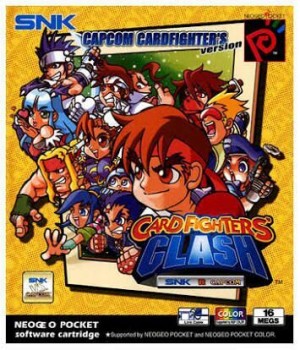 Just as Bandai had, SNK sought out some name brands to help them establish themselves. Sadly for SNK, they wouldn’t be able to land someone as big as Squaresoft or Enix. No, they would have to settle for Quest and Sting, who released installments in their reasonably popular Ogre Battle and Evolution series respectively. Second party developers contributed a handful of titles, including Sacnoth’s Dive Alert, Noise Factory’s Dark Arms: Beast Busters, and Yumekobo’s Biomotor Unitron. From SNK themselves came SNK vs. Capcom: Card Fighter’s Clash, arguably the best reason to own a Neo Geo Pocket Color even today. All of these were released in English save Ogre Battle and the sequels to Biomotor Unitron and Card Fighter, but some only saw the light of day in Europe. Even more so than the WonderSwan’s range of RPGs, the Neo Geo Pocket RPG library shows a strong awareness of Pokemon. Both Dive Alert and Card Fighter’s Clash were released in two different versions, and virtually all of the games leaned on some sort of collection mechanic.
Just as Bandai had, SNK sought out some name brands to help them establish themselves. Sadly for SNK, they wouldn’t be able to land someone as big as Squaresoft or Enix. No, they would have to settle for Quest and Sting, who released installments in their reasonably popular Ogre Battle and Evolution series respectively. Second party developers contributed a handful of titles, including Sacnoth’s Dive Alert, Noise Factory’s Dark Arms: Beast Busters, and Yumekobo’s Biomotor Unitron. From SNK themselves came SNK vs. Capcom: Card Fighter’s Clash, arguably the best reason to own a Neo Geo Pocket Color even today. All of these were released in English save Ogre Battle and the sequels to Biomotor Unitron and Card Fighter, but some only saw the light of day in Europe. Even more so than the WonderSwan’s range of RPGs, the Neo Geo Pocket RPG library shows a strong awareness of Pokemon. Both Dive Alert and Card Fighter’s Clash were released in two different versions, and virtually all of the games leaned on some sort of collection mechanic.
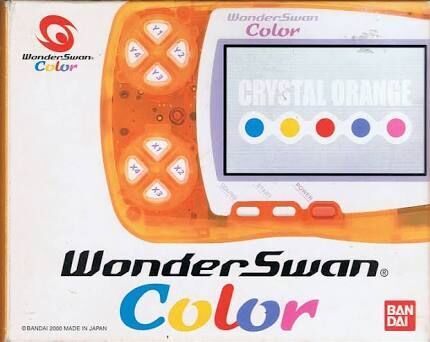 In terms of their significance to the development of handheld RPGs, I’d say the WonderSwan’s biggest contribution was in dragging Squaresoft back to the handheld market, while the Neo Geo Pocket Color’s Card Fighter’s Clash made major strides in selling the idea of card collecting RPGs to a skeptical hardcore audience. In the end, neither company’s stab at the handheld market was able to make a significant difference in the big picture. If nothing else, though, they at least demonstrated the system-selling power of RPGs in the portable sector. Even if you don’t have a Pokemon-sized brand, you can still move hardware to a sometimes small but always dedicated base of RPG fans. Nintendo’s next handheld challenger and ultimately the most successful of the bunch would show that principle in action to an even greater extent, but we’ve still got a lot to cover before we get to them. First, we need to advance to the next stop on our journey, which looks at what happens when Nintendo has the market all to themselves for a few years.
In terms of their significance to the development of handheld RPGs, I’d say the WonderSwan’s biggest contribution was in dragging Squaresoft back to the handheld market, while the Neo Geo Pocket Color’s Card Fighter’s Clash made major strides in selling the idea of card collecting RPGs to a skeptical hardcore audience. In the end, neither company’s stab at the handheld market was able to make a significant difference in the big picture. If nothing else, though, they at least demonstrated the system-selling power of RPGs in the portable sector. Even if you don’t have a Pokemon-sized brand, you can still move hardware to a sometimes small but always dedicated base of RPG fans. Nintendo’s next handheld challenger and ultimately the most successful of the bunch would show that principle in action to an even greater extent, but we’ve still got a lot to cover before we get to them. First, we need to advance to the next stop on our journey, which looks at what happens when Nintendo has the market all to themselves for a few years.
Shaun’s Five For The Game Boy Competition Era
For each part of this series, I’ll be selecting five notable or interesting titles to highlight. If you’re looking to get a good cross-section of the era in question, these picks are a good place to start.

Dragon Crystal (GG) – Handheld gaming’s first roguelike is surprisingly quite good. It’s a bit easier than most other roguelikes, but it has enough bite to it to keep it interesting. I particularly like how abstract it gets with its backgrounds. It’s a great use of the Game Gear’s color screen. Now, I’ll admit I have a soft spot for this game due to playing it a lot when I was younger, but I think it’s still enjoyable today. Best of all, you can get it for a reasonable price on Nintendo’s 3DS eShop.
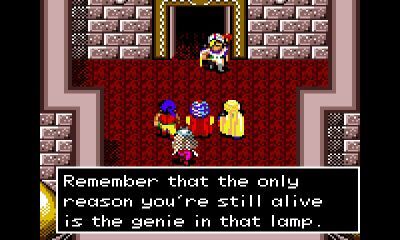
Defenders Of Oasis (GG) – An unusual theme can go a long way in a genre that tends to rely on one or two settings heavily. Defenders Of Oasis doesn’t have any innovative gameplay ideas, but its interesting setting and the way the game incorporates that setting into its mechanics is neat. The only magic user in your party is the Genie, and each spell is framed as a wish. I like that. The game has some pacing issues, with particular points where you’ll probably have to stop and grind, but I rather enjoyed this game, both when I played it in my teenage years and when I revisited it for this article. Defenders Of Oasis is also available on the 3DS eShop if you want to give it a try.

Shining Force: The Sword Of Hajya (GG) – Until Fire Emblem made its way to the Game Boy Advance, this was the handheld strategy RPG to beat. No, you can’t walk around towns the way you can in the Genesis games, and there aren’t quite as many secrets to uncover, but in virtually every other respect, this is just as good as the mainline installments. Even the graphics are quite nice, with the character portraits barely missing a beat compared to the 16-bit versions. I wish SEGA had localized the other two parts in this series, but one handheld Shining Force is better than zero, I suppose. Like the other Game Gear games, you can buy Sword Of Hajya on the 3DS eShop if you feel like trying it out.

SNK vs. Capcom: Card Fighter’s Clash (NGPC) – Extreme fanservice backed by quality gameplay. At its core it’s not all that different from collectible card games of its era, but the excellent presentation and near-perfect balance put this game near the top of the pack when it comes to card-battling RPGs. It’s a good thing it holds up well, too, because SNK seemingly forgot how they did it all so well, releasing a number of follow-ups that messed with the gameplay in some form or another. Is it worth getting a Neo Geo Pocket Color for? I’d say yes.
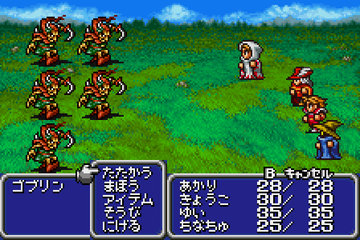
Final Fantasy (WS) – Okay, strictly speaking, you don’t have to play Final Fantasy on a WonderSwan. You can play it almost anywhere these days. But I think the WonderSwan version deserves a spot on this list both due to its significance in the marketplace and for being one of the better versions of the game. It fixes bugs and cleans up annoyances from the original version of the game, gives everything a nice face lift, but doesn’t significantly alter the original difficulty. I don’t mind any version of Final Fantasy, but I prefer the pre-Game Boy Advance versions due to the drastically reduced difficulty in remakes from that point on.
That’s all for part four of our on-going History Of Handheld RPGs feature. Please let me know what you think by commenting below, posting in the Official RPG Reload Club thread, or by tweeting me at @RPGReload. As for me, I’ll be back next week with a look at Terraria ($4.99), the quirky builder RPG from 505 Games! Thanks as always for reading!
Next Week’s Reload: Terraria